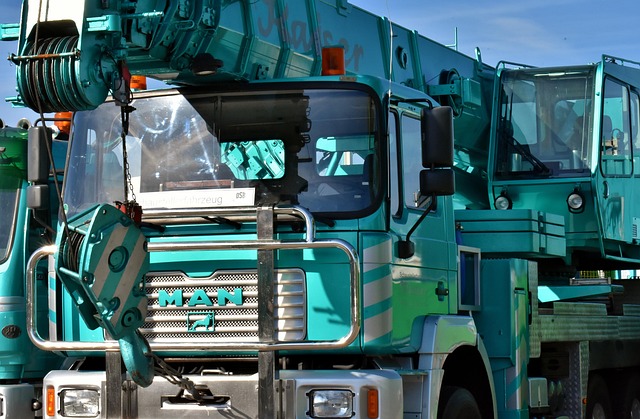Looking to register your car in California? This comprehensive guide walks you through every step, from understanding vital requirements to securing your vehicle’s unique identification number (VIN) through accurate dmv vin verification. Gather essential documents, visit your local DMV, and complete the process efficiently. We’ll navigate you through paying fees and receiving your personalized license plate.
- Understand California Car Registration Requirements
- Gather Necessary Documents for Car Registration
- Visit Your Local DMV for Vehicle Registration
- Complete VIN Verification Process Effectively
- Pay Car Registration Fees and Receive Your Plate
Understand California Car Registration Requirements

Before registering your car in California, it’s crucial to understand the state’s specific requirements. The California Department of Motor Vehicles (DMV) mandates that all vehicles operated within the state be properly registered and have undergone a vehicle identification number (VIN) verification process. This involves confirming the VIN on the vehicle matches records and ensuring there are no outstanding issues like theft or outstanding loans associated with it.
The DMV offers both in-person and online registration options, but for convenience and speed, many Californians opt for a mobile VIN inspection service. These services send a professional to your location to perform the VIN verification using specialized tools. This approach streamlines the registration process, eliminating the need to visit a DMV office and potentially saving you valuable time and effort, especially if your vehicle is not in drivable condition.
Gather Necessary Documents for Car Registration

Before you start the registration process, ensure you have all the essential documents ready. The California Department of Motor Vehicles (DMV) requires several key pieces of information to verify your vehicle’s ownership and identity. One crucial step is to obtain a Vehicle Identification Number (VIN) verification report. This can be done through a mobile vin inspection or by visiting a DMV office, where they’ll perform a vin inspection. The VIN is unique to each vehicle and acts as a digital fingerprint, making it essential for registration.
Additionally, you’ll need proof of ownership, which might include a title document or, if the car is newly purchased, a bill of sale with the seller’s information. A valid driver’s license or state ID card is also mandatory for the registration process. Gather these documents to streamline the car registration experience in California.
Visit Your Local DMV for Vehicle Registration

Visit your local California DMV office to begin the registration process. Bring along all necessary documents, including proof of ownership, vehicle identification number (VIN) verification, and any required forms. The DMV will conduct a thorough inspection of your vehicle to ensure it complies with state safety and emissions standards. This includes checking the VIN, which is crucial for identifying your car’s unique characteristics and history.
A mobile vin verifier or inspector can also be helpful if you prefer a more convenient option. These services allow you to get the necessary VIN inspection done quickly at your location, saving you a trip to the DMV. However, it’s essential to ensure that the mobile service is reputable and authorized by the California DMV to avoid any potential issues during registration.
Complete VIN Verification Process Effectively

To complete the DMV VIN verification process effectively, start by gathering all necessary documents, including the vehicle’s registration, title, and proof of insurance. Next, schedule a mobile VIN inspection if you’re unable to visit a DMV location. This service allows for convenience as it brings the verification process directly to you. During the inspection, ensure that the vehicle’s VIN (Vehicle Identification Number) is clearly displayed on all required documents and matches the one listed on the vehicle’s title.
For a successful mobile VIN verification, be prepared to answer questions about your car’s history and provide any additional documentation requested by the inspector. This may include proof of ownership transfers, accident reports, or maintenance records. Following these steps ensures that your car registration process is smooth and accurate, avoiding potential delays or issues with California’s DMV.
Pay Car Registration Fees and Receive Your Plate

After completing your vehicle’s registration application, it’s time to pay the required fees. These fees vary based on several factors including the type of vehicle and emissions standards met. You can typically pay online or in person at a California DMV office. Once your payment is processed, you’ll receive confirmation along with details for scheduling a Vehicle Identification Number (VIN) verification. This critical step involves a thorough inspection to ensure your car meets all necessary safety and environmental standards, known as the dmv vin verification.
During the VIN inspection process, either done at a DMV location or through a mobile vin inspection service, a trained professional will examine various components of your vehicle, including its emissions system, lights, safety features, and overall condition. After successfully passing this inspection, you’ll be issued personalized license plates for your car, completing your registration process.
Registering a car in California is a straightforward process once you understand the requirements and gather the necessary documents. By visiting your local DMV, completing the VIN verification process efficiently, and paying the required fees, you’ll be on your way to legal and safe driving. Remember to keep your registration up-to-date to avoid any penalties and ensure a smooth driving experience in the Golden State.



